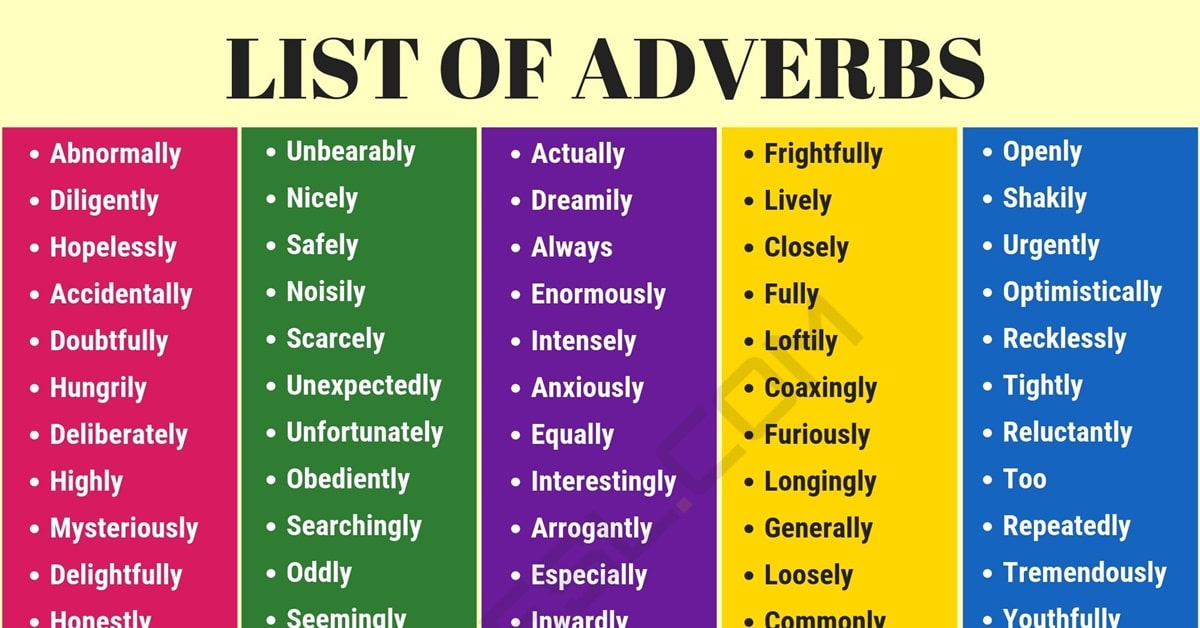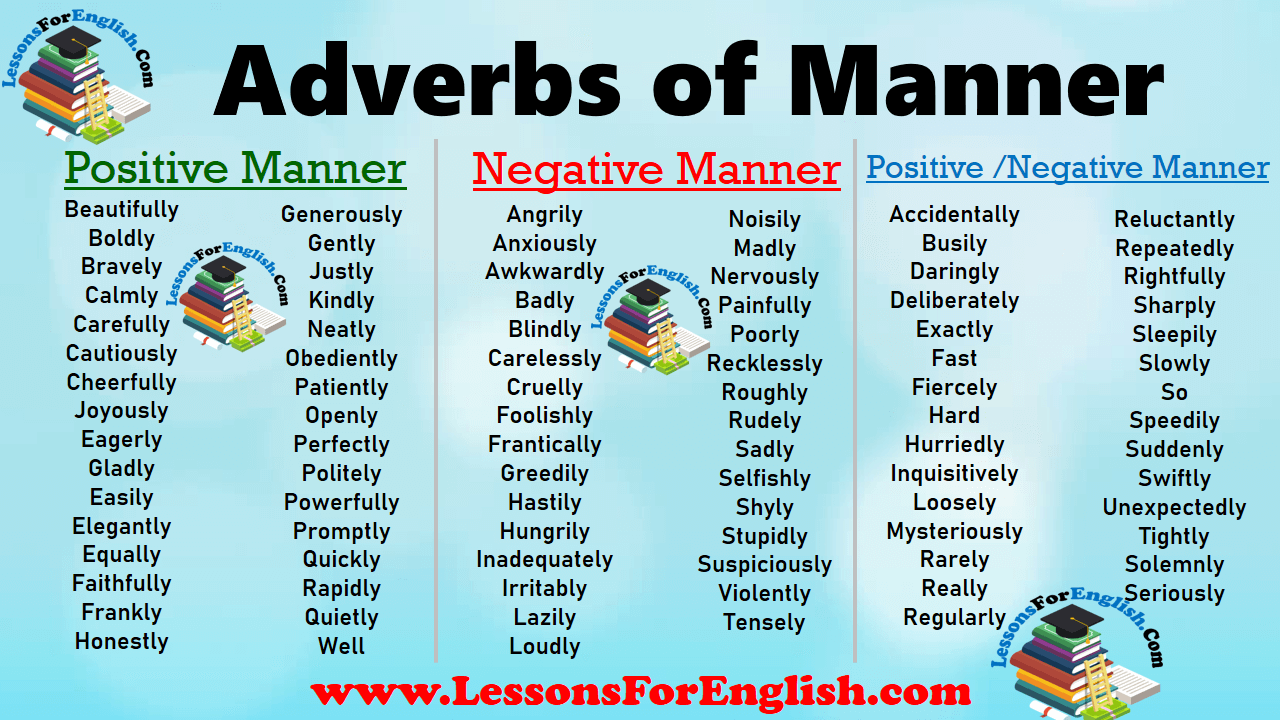Adverbs Of Manner Ly | They are usually placed either after the main verb or after the object. Some adverbs have the same form as adjectives. In this episode of the flatmates, paul says: 1 usually you make an adverb by adding ly to an adjective adjective + ly quiet + ly = quietly poor + ly = poorly slow + ly = slowly 2 if the adjective ends with y then you drop the y and add ily adjective (‐y) + ily easy (‐y) + ily = easily. Adverbs of manner tell us how something happens.
Adverbs of manner tell us the way or how something is being done. What are adverbs of manner? You do not use adverbs after link verbs, you use adjectives. If the verb has an object, the adverb of manner is usually placed after the object, not between the verb and. It usually comes after the main verb.

Generally adverbs of manner ends with 'ly', like carefully, loudly slowly etc. Adverbs of manner tell us how something happens. Some adverbs have the same form as adjectives. An adverb of manner is an adverb (such as quickly or slowly) that describes how and in what way the action of a verb is carried out. Adverbs of manner are really useful because they let us add a lot of extra details to descriptions, to make what we say more interesting and dynamic to the listener or reader. Specifically, adverbs provide a description of how, where, when, in what manner and to what extent something is done or happens. Polite → mary looks sad. Position of adverbs of manner. The town grew quickly after 1997. We can use the adverb of the manner in the following positions in a sentence. Adverbs of manner tell us the way or how something is being done. Adverbs of manners almost always end with 'ly'. To get a better understanding of 'adverbs of manner', we will go through few of the sentences using 'adverbs of manner'.
', the answer is 'slowly'.slowly i. Careful → you should drive carefully at night. They are usually placed either after the main verb or after the object. Some adverbs have the same form as adjectives. Polite → mary looks sad.

If the verb has an object, the adverb of manner is usually placed after the object, not between the verb and. Adverbs of manner tell us how something happens. In this episode of the flatmates, paul says: Adverbs of manner tell us the way or how something is being done. To identify the adverb of manner, the verb in a sentence is to be asked question with 'how'. For example, he walks slowly. In this sentence if we ask 'how does he walk? Easy becomes easily here are some more examples of this spelling change 1 usually you make an adverb by adding ly to an adjective adjective + ly quiet + ly = quietly poor + ly = poorly slow + ly = slowly 2 if the adjective ends with y then you drop the y and add ily adjective (‐y) + ily easy (‐y) + ily = easily. Adverbs of manner are really useful because they let us add a lot of extra details to descriptions, to make what we say more interesting and dynamic to the listener or reader. Rules for forming adverb of manner. My mom speaks english poorly. Moreover, adverbs can be used in many.
Some adverbs have the same form as adjectives. Adverbs of manner should always come immediately after verbs which have no object (intransitive verbs). Adverbs of manners almost always end with 'ly'. Adverbs of manner are really useful because they let us add a lot of extra details to descriptions, to make what we say more interesting and dynamic to the listener or reader. To get a better understanding of 'adverbs of manner', we will go through few of the sentences using 'adverbs of manner'.

Adverbs of manner tell us how something happens. 1 usually you make an adverb by adding ly to an adjective adjective + ly quiet + ly = quietly poor + ly = poorly slow + ly = slowly 2 if the adjective ends with y then you drop the y and add ily adjective (‐y) + ily easy (‐y) + ily = easily. They are usually placed either after the main verb or after the object. Position of adverbs of manner. Adverbs of manners almost always end with 'ly'. To identify the adverb of manner, the verb in a sentence is to be asked question with 'how'. In this video lecture you are going to learn 'ly' adverbs of manner that'll enhance your vocabulary#shiprainstituteoflanguage#spokenenglish. We can use the adverb of the manner in the following positions in a sentence. Moreover, adverbs can be used in many. Careful → you should drive carefully at night. Some adverbs have the same form as adjectives. In this sentence if we ask 'how does he walk? Easy becomes easily here are some more examples of this spelling change
Adverbs Of Manner Ly: 1 usually you make an adverb by adding ly to an adjective adjective + ly quiet + ly = quietly poor + ly = poorly slow + ly = slowly 2 if the adjective ends with y then you drop the y and add ily adjective (‐y) + ily easy (‐y) + ily = easily.